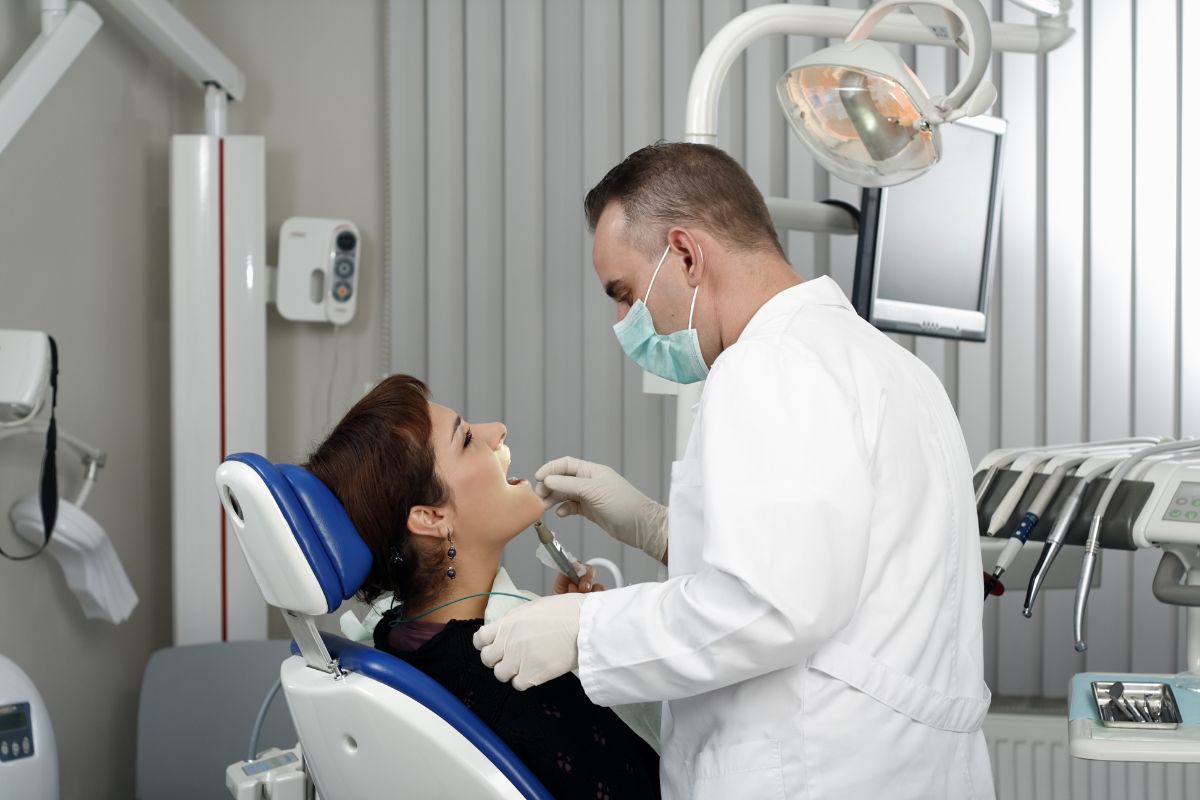Causey + Hall Orthodontics - The Facts
Table of ContentsCausey + Hall Orthodontics Fundamentals Explained3 Easy Facts About Causey + Hall Orthodontics ExplainedSome Of Causey + Hall OrthodonticsHow Causey + Hall Orthodontics can Save You Time, Stress, and Money.The 7-Minute Rule for Causey + Hall OrthodonticsUnknown Facts About Causey + Hall Orthodontics
What is the distinction between a dental practitioner and an orthodontist? To answer a concern that is frequently asked, both dentists and orthodontists assist individuals acquire much better oral wellness, albeit in different means. It aids to bear in mind that dental care is an instead wide scientific research with different clinical specializations. All dental professionals, consisting of orthodontists, deal with the teeth, gums, jaw and nerves.Orthodontists and dentists both provide dental treatment for patients. The major distinction is that coming to be an orthodontist needs a particular specialized in treating the imbalance of the teeth and jaw.
An orthodontist is a dentist that has undertaken training to concentrate on the medical diagnosis, prevention and treatment of abnormalities in the jaw and teeth. Their training includes remedying these existing conditions. They can likewise identify possible issues in teeth placement that might establish when conditions are left unattended. Orthodontists can aid individuals of any ages - https://causey-plus-hall-orthodontics.jimdosite.com/.
The 25-Second Trick For Causey + Hall Orthodontics
This includes all the essential education and learning to end up being a basic dental professional. According to the American Trainee Dental Organization (ASDA), it suggests you will certainly need to have either a Medical professional of Medicine in Dental Care (DMD) or a Doctor of Oral Surgical Treatment (DDS). In various other words, orthodontists require to complete dental college and afterwards acquire an orthodontics specialty education.


Various other than the orthodontist, we frequently see aides functioning with these oral experts in their clinics. What is an orthodontist assistant called?
Causey + Hall Orthodontics - An Overview
At Advanced Orthodontics, we give individuals with a all natural therapy experience. On top of that, we provide flexible therapy timetables, flexible payment options and an enjoyable, enjoyable experience. Phone call ( 480) 357-4900 today for more information and timetable a visit.
An orthodontist is a dental professional trained to diagnose, avoid, and treat teeth and jaw abnormalities. Orthodontists work with people of all ages, from kids to grownups.
All orthodontists are dental professionals, yet not all dental professionals are orthodontists. Orthodontic residency programs use extensive, focused direction for oral professionals. They concentrate on 2 locations: Just how to properly and securely move teeth How to appropriately assist development in the teeth, jaw, and faceOnce an orthodontist has finished training, they have the choice to come to be board certified.
The Greatest Guide To Causey + Hall Orthodontics
Imbalance, or malocclusion, is the most common reason individuals see an orthodontist - orthodontist. It is hereditary and is the outcome of size differences in between the top and lower jaw or in between the jaw and teeth. Malocclusion brings about tooth congestion, an askew jaw, or uneven bite patterns. Malocclusion is typically treated with: Your orthodontist affixes metal, ceramic, or plastic square bonds to your teeth.
Some individuals need a headwear to help move teeth right into line with stress from outside the mouth. A retainer is a customized tool that keeps your teeth in area.
They can produce added room in the mouth without having to pull teeth. Orthodontists use cords, medical screws, or plates to sustain your jaw bone.
Causey + Hall Orthodontics Things To Know Before You Buy
Throughout your first orthodontic appointment, you'll likely have: An oral examPhotos taken of your face and smileDental X-raysPanoramic (360 degree) X-rays of your face and headImpressions to develop mold and mildews of your teethThese examinations will help your orthodontist understand exactly how to wage your therapy. An orthodontist is a dental practitioner that's had training to treat your teeth and jaw.
Orthodontists may execute surgical procedure, exams,X-rays,and more to assist you acquire a much more comfy, much healthier smile. An orthodontist is concentrated on your bite, so something like a broken tooth would certainly be taken care of by a dental expert. Orthodontists are dental professionals but not all dental professionals are orthodontists. Orthodontists are focused on your bite, or the method your teeth meshed, and the straightness of your teeth.
The Only Guide to Causey + Hall Orthodontics
Ever before wondered just how celebs always appear to have completely aligned teeth? The solution typically depends on the skilled hands of an orthodontist - family orthodontist. What precisely does an orthodontist do? Orthodontists are dental experts that focus on dealing with abnormalities in the teeth and jaws. Their expertise surpasses just producing a lovely smile; it extends to boosting your total dental health and feature.

These removable trays visit here are personalized to considerably shift the teeth's placement. In instances of narrow jaws, palatal expanders can be made use of to create area for appropriate tooth placement.